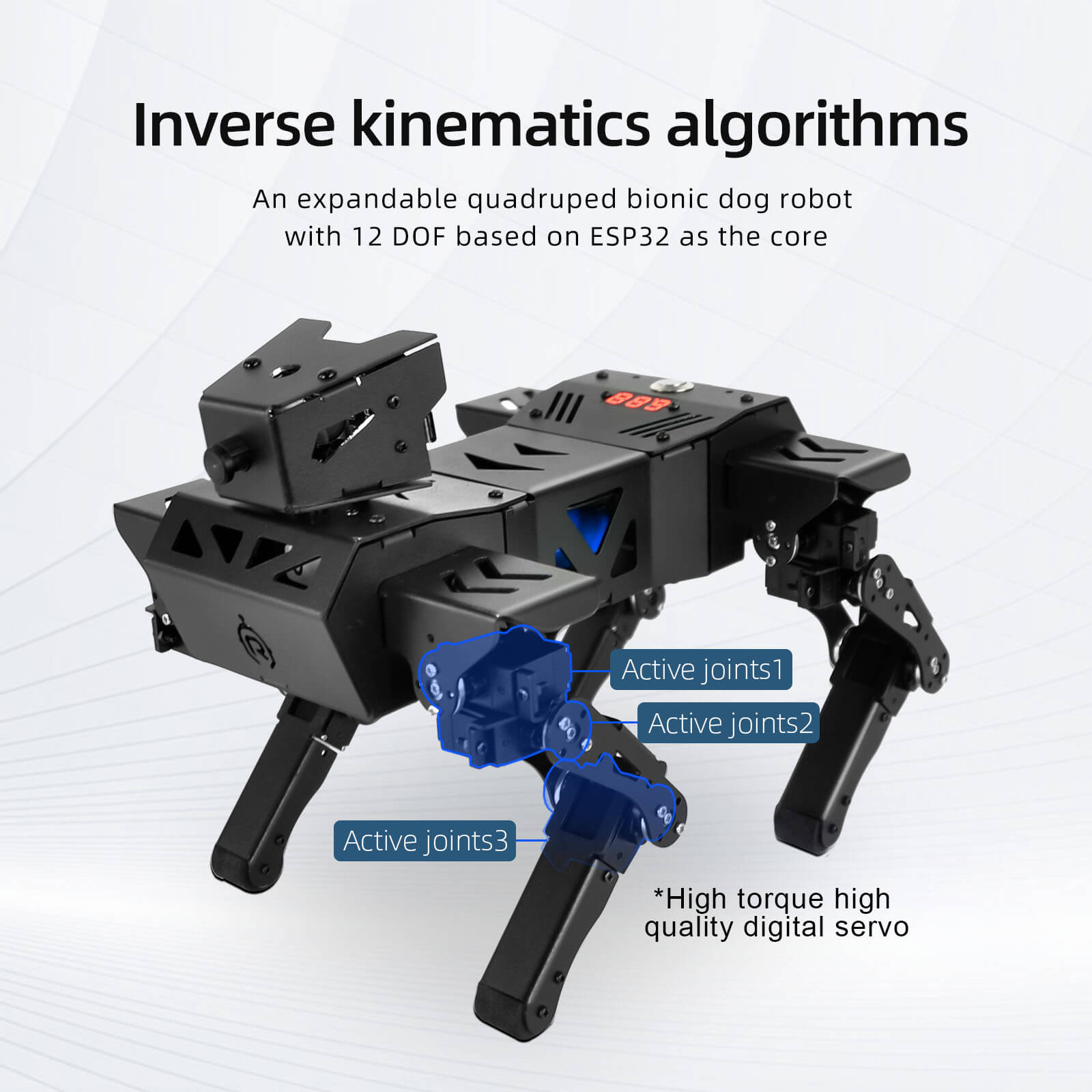Preface
With the rapid development of science and technology, robotics has entered various fields of real life from the imagination of science fiction movies. In the field of education, the application of robots has brought revolutionary changes to the traditional education model. Among them, ESP32 bionic Corgi robot dog, as a robot product that integrates advanced technology and bionic principles, has become increasingly prominent in teaching, scientific research and experiments. This paper aims to explore the role of ESP32 bionic Corgi robot dog in education and how it can help the development of education.
1. Performance of ESP32 motherboard and its role in bionic Corgi robot dog
ESP32 is a low-power, high-performance IoT chip that integrates Wi-Fi and Bluetooth functions, has powerful computing power and rich interface resources. These characteristics make ESP32 have broad application prospects in the field of robotics. In the bionic Corgi robot dog, the ESP32 motherboard, as the core control unit, undertakes important tasks such as data processing, instruction execution and wireless communication.
First, the high-performance computing power of the ESP32 motherboard ensures that the bionic Corgi robot dog can process data from various sensors in real time and respond quickly according to preset algorithms and programs. This ability enables the robot dog to flexibly complete various actions and tasks, such as walking, running, jumping, rolling, etc., thereby simulating the motion characteristics of real creatures.
Secondly, the Wi-Fi and Bluetooth functions of the ESP32 motherboard enable the bionic Corgi robot dog to communicate wirelessly with other devices. This ability not only expands the application range of the robot dog, but also allows users to remotely control and program the robot dog through terminal devices such as mobile phone APP and computers. This flexibility greatly improves the user's experience and learning interest.
Finally, the rich interface resources of the ESP32 motherboard enable the bionic Corgi robot dog to easily connect to various sensors and actuators. These sensors and actuators can monitor the status and environmental information of the robot dog in real time, and adjust the robot dog's actions and behaviors as needed. This autonomy enables the robot dog to better adapt to various complex environments and task requirements.
2. Overview of the functions of the bionic Corgi robot dog
The bionic Corgi robot dog is not only highly intelligent and autonomous, but also has a series of unique functions and features. These functions make the robot dog have a wide range of application prospects in the field of education.
First, the bionic Corgi robot dog is highly bionic and customizable. Its appearance and action design refer to the characteristics of real creatures, making the robot dog look more realistic and cute. At the same time, users can also customize and transform the robot dog according to their needs to meet different teaching and experimental needs.
Secondly, the bionic Corgi robot dog has rich scalability and actuators. These expansion boxes can increase the various functions of the robot dog. For example, the AI expansion box can enable the robot dog to realize many AI functions such as visual recognition, and the graphical programming box can meet the programming needs of primary and secondary school students. The actuator can adjust the robot dog's movements and behaviors as needed, such as changing the walking speed and adjusting the posture. This rich perception and execution ability enables the robot dog to complete various complex tasks and challenges.
In addition, the bionic Corgi robot dog also supports multiple programming languages and development environments. Users can use programming languages such as Python and C++ to program and control the robot dog, or use development environments such as Arduino and MicroPython for rapid development and debugging. This openness allows users to conduct in-depth exploration and innovation according to their interests and needs.
3. Practical application of bionic Corgi robot dog in education
In the field of education, the bionic Corgi robot dog has broad application prospects and potential. The following are some specific practical application cases:
Robot programming education: The bionic Corgi robot dog can be used as a teaching aid and experimental platform for robot programming education. Students can control the movements and behaviors of the robot dog through programming and learn the basic principles and techniques of robot programming. This practical learning method can stimulate students' learning interest and creativity, and improve their programming and problem-solving abilities.
Artificial intelligence and machine learning education: The bionic Corgi robot dog can be used as an experimental platform for artificial intelligence and machine learning education. Students can use the robot dog to conduct experiments and research in image recognition, speech recognition, natural language processing, etc. Through practical application scenarios and data sets, students can have a deeper understanding of the principles and applications of artificial intelligence and machine learning.
Popular science education and experimental teaching: The bionic Corgi robot dog can also be used for popular science education and experimental teaching. By showing the working principle and application scenarios of the robot dog, it can help students understand the development and application prospects of robotics technology. At the same time, students can also use the robot dog to conduct various experiments and explorations, such as experiments in mechanical principles, electronic circuits, sensor applications, etc. This experimental learning method can improve students' practical ability and scientific literacy.
Summary
In summary, the ESP32 bionic Corgi robot dog has broad application prospects and potential in the field of education. Its high performance, intelligence and autonomy make the robot dog a powerful assistant and experimental platform in the field of education. Through the application of robot programming education, artificial intelligence and machine learning education, popular science education and experimental teaching, the robot dog can stimulate students' learning interest and creativity, and improve their practical ability and scientific literacy. In the future, with the continuous advancement of technology and the continuous expansion of application scenarios, the role of the bionic Corgi robot dog in the field of education will become more prominent.

